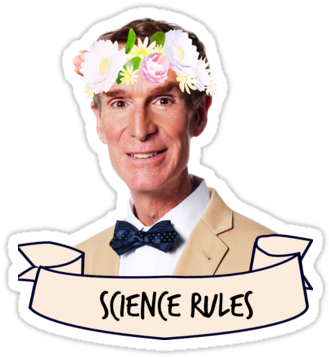this post was submitted on 22 Apr 2025
610 points (99.2% liked)
Science Memes
14364 readers
2635 users here now
Welcome to c/science_memes @ Mander.xyz!
A place for majestic STEMLORD peacocking, as well as memes about the realities of working in a lab.

Rules
- Don't throw mud. Behave like an intellectual and remember the human.
- Keep it rooted (on topic).
- No spam.
- Infographics welcome, get schooled.
This is a science community. We use the Dawkins definition of meme.
Research Committee
Other Mander Communities
Science and Research
Biology and Life Sciences
- !abiogenesis@mander.xyz
- !animal-behavior@mander.xyz
- !anthropology@mander.xyz
- !arachnology@mander.xyz
- !balconygardening@slrpnk.net
- !biodiversity@mander.xyz
- !biology@mander.xyz
- !biophysics@mander.xyz
- !botany@mander.xyz
- !ecology@mander.xyz
- !entomology@mander.xyz
- !fermentation@mander.xyz
- !herpetology@mander.xyz
- !houseplants@mander.xyz
- !medicine@mander.xyz
- !microscopy@mander.xyz
- !mycology@mander.xyz
- !nudibranchs@mander.xyz
- !nutrition@mander.xyz
- !palaeoecology@mander.xyz
- !palaeontology@mander.xyz
- !photosynthesis@mander.xyz
- !plantid@mander.xyz
- !plants@mander.xyz
- !reptiles and amphibians@mander.xyz
Physical Sciences
- !astronomy@mander.xyz
- !chemistry@mander.xyz
- !earthscience@mander.xyz
- !geography@mander.xyz
- !geospatial@mander.xyz
- !nuclear@mander.xyz
- !physics@mander.xyz
- !quantum-computing@mander.xyz
- !spectroscopy@mander.xyz
Humanities and Social Sciences
Practical and Applied Sciences
- !exercise-and sports-science@mander.xyz
- !gardening@mander.xyz
- !self sufficiency@mander.xyz
- !soilscience@slrpnk.net
- !terrariums@mander.xyz
- !timelapse@mander.xyz
Memes
Miscellaneous
founded 2 years ago
MODERATORS
you are viewing a single comment's thread
view the rest of the comments
view the rest of the comments

You know I learned all that calculus and never learned how it applies to orbits. Can someone connect the dots for me? (In a little more detail than calculus is rates of change.)
in simplification, you could derive that curvature of the orbit is basically the force between objects, with radius, from the centre of mass. Once you know curvature at a point, you ca define a series of curves fitting, and substitute with other postions to find all constants. And what is curvature? you can find online, that curvature is just a function of second order derivative, and you just have to solve a second degree differential equation.
Orbit is esspetially free falling past the side of the planet, fast enough that the force of gravity doesn't completely pull you in. So you kind of fall past the planet, but get curved towards it enough you don't go flying out away either. The minimum velocity to orbit around a planet with radius r and gravity g is Vorbit = √(rg) I believe
Orbits, it turns out, are mostly just rates of change.
As long as it took me to really comprehend the rate of change thing and understand how calculus is that, until I read that sentence I didn't think of all the gravity parts impacting a stellar body and velocity in a direction being impacted by multiple forces. Mean I always knew the story of Newton inventing calculus for that but never clicked exactly how it related. The sad thing is it's a sort of thing I pondered a bit on but never quite made the connection.
So, the heart of the issue is that each object's path changes continuously, and the forces involved change in kind. Even worse, the objects interact with each other, again continuously - it's not one-sided.
If you imagine trying to do it pre-Calculus, some kind of "just map it all out into a grid, etc.", you can see the problems this continuous change imposes (exercise left for the reader).
By involving the Stravinsky Interpretation, it quickly becomes clear that the dimorphic superposition destabilizes. The clever reader might object "but what if you fold in all the noodly surfaces to recohere the manifold?"
And that clever reader would be right! But we didn't know that until old Dr. Isaac "Zeke" Newton came along and made it that way.
Some say the devil himself taught him how it's done, because no one else can read his notes! So keep your eye on old Zeke when you run into him.
An orbit is analogous to position. Trying to predict the position of planets proved difficult to do accurately. People had figured out velocity a long time ago, but no one had ever explored the concept of describing an orbit just from the accelerations of the planets. It turns out acceleration has a fairly simple equation, and in order to get back to the observable thing of orbits, you need to integrate it twice. Newton was the first person to describe acceleration and to use it to predict the motion of planets. Especially for predicting Mars, it was essential because Jupiter is massive enough and close enough to alter its orbit, so simple Kepler's Laws aren't sufficient to describe the orbit.